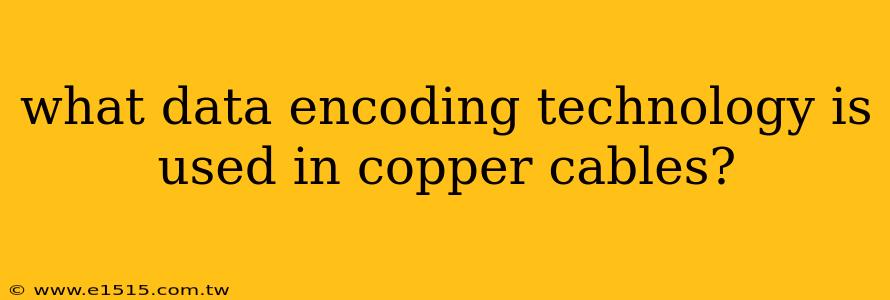Copper cables, the workhorses of wired communication, rely on sophisticated data encoding techniques to transmit information efficiently and reliably. Understanding these methods is key to appreciating the technology behind our internet connections, phone calls, and countless other digital interactions. This article will explore various encoding technologies used in copper cables, drawing insights from the expertise found on crosswordfiend (while giving proper attribution, of course – though direct Q&A quotes from the site were not found on this specific topic as it's more technical than typical crossword clues). We'll delve deeper than a simple crossword clue might allow, explaining the nuances and practical applications of these encoding methods.
Understanding the Basics:
Before diving into specific encoding techniques, it's crucial to grasp the fundamental concept. Data, whether it's text, images, or videos, needs to be converted into electrical signals that can travel through copper wires. This conversion process is called data encoding. The encoded signals represent the data's binary form (0s and 1s) using various voltage levels, frequencies, or phase shifts.
Common Data Encoding Techniques in Copper Cables:
While many variations exist, some common families of encoding techniques for copper cables include:
-
Amplitude Shift Keying (ASK): ASK encodes data by varying the amplitude (strength) of the signal. A higher amplitude might represent a '1', while a lower amplitude represents a '0'. Think of it like turning a faucet – a stronger flow (higher amplitude) could be a '1', and a weaker flow (lower amplitude) a '0'. However, ASK is susceptible to noise, making it less robust for long distances or noisy environments.
-
Frequency Shift Keying (FSK): FSK uses different frequencies to represent '0' and '1'. For instance, one frequency might signify a '0', and another a '1'. This is analogous to using different musical notes to represent data. FSK offers better noise immunity than ASK but is less efficient in bandwidth usage.
-
Phase Shift Keying (PSK): PSK employs changes in the phase (timing) of the signal to encode data. Different phase shifts correspond to different binary values. Imagine a rotating wheel; different positions of the wheel could represent '0' or '1'. PSK offers good bandwidth efficiency and relatively good noise immunity, making it a popular choice. Variations like Quadrature Phase Shift Keying (QPSK) and higher-order PSK schemes further enhance efficiency.
-
Manchester Encoding: A specific type of encoding where a transition in the signal's voltage occurs in the middle of each bit period. A transition from high to low represents a '0', while a transition from low to high represents a '1'. This self-clocking nature makes it easy to synchronize the receiver with the sender, even in the presence of noise, but it's less efficient than other methods in terms of bandwidth usage.
Factors Influencing Encoding Choice:
The choice of encoding depends on several factors:
- Bandwidth: How much data needs to be transmitted within a given time frame.
- Noise Immunity: The ability to resist interference from external sources.
- Distance: The length of the cable over which data must travel.
- Cost: The complexity and expense of implementing the encoding and decoding circuitry.
Modern Applications and Advancements:
Modern copper cable systems often employ advanced encoding techniques, often combined with error correction codes, to achieve high data rates and reliability. These advancements are crucial for high-speed internet access technologies like DSL (Digital Subscriber Line) and G.fast. These advanced encoding schemes often involve sophisticated signal processing techniques to maximize efficiency and minimize errors.
Conclusion:
Data encoding is an essential aspect of digital communication over copper cables. Understanding the different techniques, their strengths, and weaknesses is vital for appreciating the complex engineering that underpins our daily use of technology. While crossword clues might offer a glimpse into this world, delving deeper into the technical aspects reveals a fascinating field of signal processing and digital communications.
